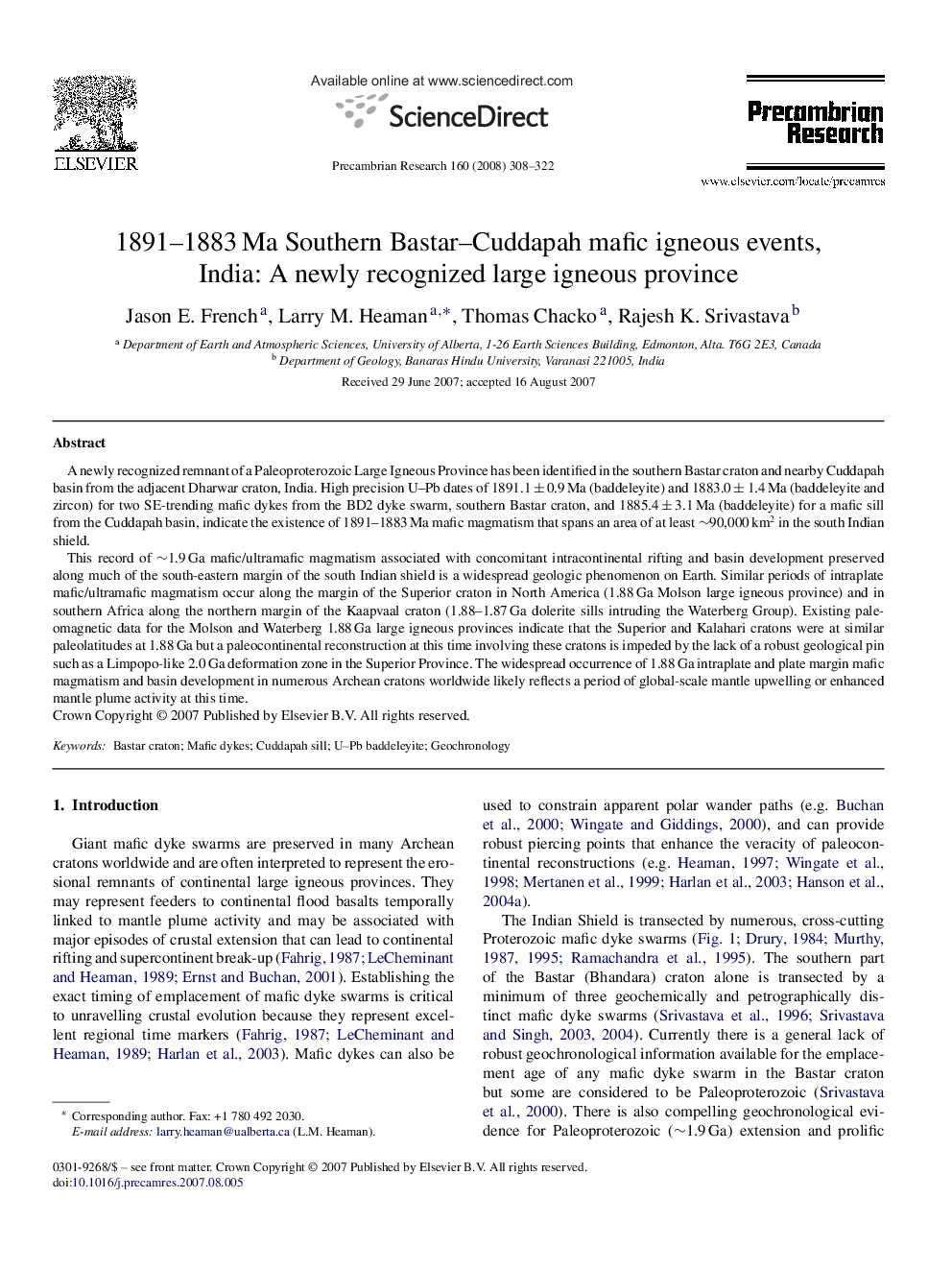| Article ID | Journal | Published Year | Pages | File Type |
|---|---|---|---|---|
| 4724485 | Precambrian Research | 2008 | 15 Pages |
A newly recognized remnant of a Paleoproterozoic Large Igneous Province has been identified in the southern Bastar craton and nearby Cuddapah basin from the adjacent Dharwar craton, India. High precision U–Pb dates of 1891.1 ± 0.9 Ma (baddeleyite) and 1883.0 ± 1.4 Ma (baddeleyite and zircon) for two SE-trending mafic dykes from the BD2 dyke swarm, southern Bastar craton, and 1885.4 ± 3.1 Ma (baddeleyite) for a mafic sill from the Cuddapah basin, indicate the existence of 1891–1883 Ma mafic magmatism that spans an area of at least ∼90,000 km2 in the south Indian shield.This record of ∼1.9 Ga mafic/ultramafic magmatism associated with concomitant intracontinental rifting and basin development preserved along much of the south-eastern margin of the south Indian shield is a widespread geologic phenomenon on Earth. Similar periods of intraplate mafic/ultramafic magmatism occur along the margin of the Superior craton in North America (1.88 Ga Molson large igneous province) and in southern Africa along the northern margin of the Kaapvaal craton (1.88–1.87 Ga dolerite sills intruding the Waterberg Group). Existing paleomagnetic data for the Molson and Waterberg 1.88 Ga large igneous provinces indicate that the Superior and Kalahari cratons were at similar paleolatitudes at 1.88 Ga but a paleocontinental reconstruction at this time involving these cratons is impeded by the lack of a robust geological pin such as a Limpopo-like 2.0 Ga deformation zone in the Superior Province. The widespread occurrence of 1.88 Ga intraplate and plate margin mafic magmatism and basin development in numerous Archean cratons worldwide likely reflects a period of global-scale mantle upwelling or enhanced mantle plume activity at this time.
